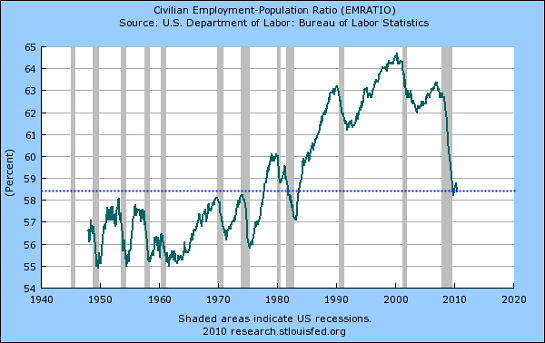 Charles Hugh Smith calls what is coming The Great Reset. His article explains the what and whys of this reset. Below is part of his article which deals with three of these factors:
Charles Hugh Smith calls what is coming The Great Reset. His article explains the what and whys of this reset. Below is part of his article which deals with three of these factors:
Since the Status Quo is unsustainable, there will be a Great Reset. The timing and nature of that Reset is up to us.
Yesterday I laid out why the Status Quo is financially unsustainable in The Promises That Cannot Be Kept. The unavoidable consequence of that is the nation will experience a Great Reset in which the promises of the Savior State are relinquished, either voluntarily or involuntarily.
As I discussed in July 4, 2011: The Cycle of Dependency and the Atrophy of Self-Reliance, our reliance on the Savior State has sapped our will and confidence, and hollowed out communities that have become dependent on the Savior State and its quasi-private partners, the corporate cartels of banking, defense, healthcare and so on.
The Great Reset will thus be a great shock to everyone who has grown dependent on Big Government and global Corporate America.
An unprecedented array of interconnected trends are converging that will force a Reset not just in the economy but in the American society and culture.
1. Peak Government and Moral Hazard. When the Savior State promises to “fix” any and all problems in the nation, such as banks making bad bets and becoming insolvent, it introduces a pervasive moral hazard into the culture. The defining characteristic of moral hazard is that it insulates a person from risk. That person will behave much differently than someone who is not insulated from risk.
In the case of finance, the person insulated from the consequences of his gambles will have an insatiable appetite for risky bets that would be viewed as insanely foolhardy by a person exposed to the full, real risk.
In broad brush, the financial crisis was caused by the Savior State backstopping all “too big to fail” banks and Wall Street bets. These financial institutions are essentially free to make stupendously risky bets and keep the gains, if any, while passing the losses back to the Savior State’s taxpayers. Imagine being given a stake at the roulette table where you get to keep your winnings but Uncle Sam makes good your losses.
Closer to home, the Savior State’s promises to fund our retirement and healthcare via modest payroll deductions has introduced a moral hazard that is reflected in the nation’s anemic savings rate: there is no need to save, because the heavy lifting of our retirement and healthcare will be done by the Savior State.
The numbers are something like this: the average Medicare recipient pays in $10,000 and extracts $250,000 in benefits. This kind of system is only sustainable if there are 25 workers for every retiree. Right now, there are roughly 2.5 workers for every retiree in the U.S., and if you consider only private-sector workers, it’s more like 2 to 1.
We are at Peak Government and Peak Promises.
2. Demographics. “Pay as you go” systems like Social Security and Medicare only function sustainably if the retirees drawing benefits remain about 1/10th of the number of workers paying the taxes. Alternatively, the population must pyramid up every generation to maintain that 10-to-1 ratio.
The Baby Boom is roughly 76 million people, or about 25% of the population. There are about 139 million workers and about 310 million residents. The Baby Boom has started retiring en masse; all of my relatives and friends who work for state or local government are already retired well before the age of 60, and the first Boomers qualify for Medicare this year.
Once the Boomers are in the system, the worker-retiree ratio will be less than 2-to-1. This is completely unsustainable in a “pay as you go” system. Here are the charts:
3. The End of Work. The cheerleaders will claim the U.S. economy will generate 50 million new jobs in the next 20 years and thus stave off demographic collapse of entitlements, but there is scant evidence to support this claim and plentiful evidence to suggest we are also at Peak Employment in terms of civlian participation in the workforce.
I have addressed these issues many times:
End of Work, End of Affluence I: Cascading Job Losses (December 8, 2008)
End of Work, End of Affluence III: The Rise of Informal Businesses (December 10, 2008)
Endgame 3: The End of (Paying) Work (January 21, 2009)
The “End of Work” and the Coming Revolution in Education (June 7, 2011)
The full article is available here.






